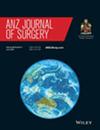Financial barriers in urology publishing: an analysis of legitimate and predatory journals
Abstract
Objectives
To compare the Article Processing Charges (APCs) and fee transparency between legitimate and potentially predatory urology journals.
Methods
Potentially predatory journals were identified from unsolicited email solicitations sent to an academic urologist between December 2023 and January 2024. APC data were collected from the journals' websites and categorized based on fee transparency: no APC, non-transparent APCs, or transparent APCs. Legitimate journals were identified from the 69 urology journals listed in the Royal Australasian College of Surgeons library. APCs for these journals were similarly collected and analyzed. We conducted a quantitative analysis with Chi-squared testing to compare categorical variables and a Mann–Whitney U-test to assess differences in APC values.
Results
A total of 214 potentially predatory journals were identified from 422 emails, originating from 75 different publishers. Solicitations spanned various disciplines, with only 7.35% from urology journals. Among potentially predatory journals, 3.7% claimed to have no APCs, 21.5% lacked fee transparency, and 74.8% disclosed their APCs, with a mean charge of 2272.50 USD (median 2000 USD; range 150–3690 USD). In contrast, legitimate journals had a mean APC of $3244.51 USD (median 3490 USD; range 635–6950 USD), with 11.6% offering publication without APCs.
Conclusion
Academic urologists often face unsolicited invitations from predatory journals and encounter high APCs from legitimate journals. This dual challenge complicates researchers' decisions and can hinder access to reputable publication avenues. To alleviate this burden, institutions should consider financial support for researchers, and both publishers and researchers must prioritize transparency and caution in the open-access publishing landscape.


 求助内容:
求助内容: 应助结果提醒方式:
应助结果提醒方式:


